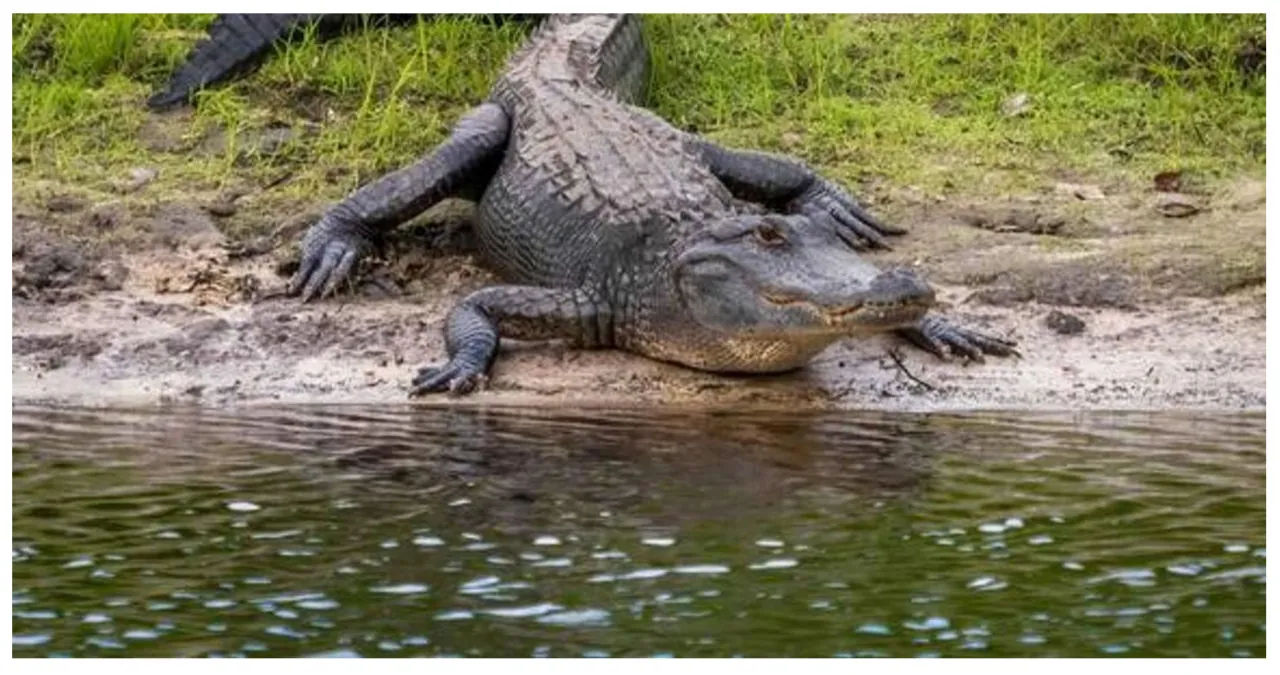The Top 5 Most Alligator-Infested Rivers In Alabama – Here’s More Details!
The Southern United States is renowned for its vast marshes and swamp land, which are safeguarded by numerous national parks. These areas are home to a diverse range of wildlife that necessitate protection. One such creature that inhabits these swamplands is the alligator. Alligators, which are sizable reptiles, comprise the two most prevalent species on Earth: the Chinese alligator and the American alligator. Found in various bodies of water like rivers, swamps, streams, ponds, and lakes, alligators thrive in diverse environments.
Alabama is home to a variety of dangerous creatures, including alligators. These formidable creatures can be found in the swamps, lakes, and rivers of the state, with a higher concentration in the southern region. In this article, we will explore the top five rivers in Alabama that are known to be infested with alligators.
Conecuh/Escambia River
The Conecuh River, also known as the Escambia River in its lower portion, is a unique example of a river with two names. Spanning a length of 258 miles, this river flows from Alabama through Florida and eventually into the Gulf of Mexico. Its journey begins near the city of Union Springs, AL, where it starts as the Conecuh River. Flowing for 198 miles in a southwestern direction, it gradually transitions into the Escambia River around Escambia Creek. From there, it continues its course through Florida, ultimately reaching Escambia Bay in the south. Throughout its path, the Conecuh/Escambia River is known for its thriving alligator population, particularly in the Escambia River section as it heads towards Florida. Numerous news reports have documented sightings of these impressive creatures in the river.
Perdido River
The Perdido River, spanning a mere 65.4 miles, may be considered small compared to other rivers in the South. Flowing through Alabama and Florida, it eventually meets the Gulf of Mexico. Interestingly, the river’s name originates from the Spanish word for “lost,” and it has served as a historical boundary for various nations, including the US, France, Spain, and Great Britain. Presently, it also serves as a dividing line between Alabama and Florida. Due to its swampy surroundings, the river is known for its abundant alligator population, with numerous sightings reported over the years.
Alabama River
The Alabama River, stretching 318 miles, holds a prominent position among the major rivers in the state. Its formation is attributed to the convergence of the Tallapoosa and Coosa rivers, after which it flows southward until it joins the Tombigbee River. With its course passing through a region abundant in agriculture and timber resources, the river plays a significant role in the state’s economy. Notably, the southern section of the Alabama River, near the Mobile-Tensaw River Delta, boasts a thriving population of alligators.
Sepulga River
Alligators are particularly fond of bodies of water with swampy and wetland characteristics, making rivers in the southern part of the state their preferred habitat due to the proximity to swamplands. One notable river in this region is the Sepulga River, stretching for 61.5 miles in Alabama. It eventually merges with the Conecuh River, passing through the Conecuh National Forest.
Yellow River
The Yellow River, also known as the Chester River or the Middle River, is a 118-mile-long river that traverses through Alabama and Florida. It eventually merges into Blackwater Bay, an arm of Pensacola Bay. The river is renowned for its abundant alligator population, with numerous sightings reported over the years. This is primarily due to the river’s proximity to the southern swamp lands of the state.
Conclusion
According to the Alabama Department of Conservation and Natural Resources, the state of Alabama is home to approximately 70,000 alligators. These reptiles, once on the verge of extinction in the 1960s, were added to the endangered species list by the United States Fish and Wildlife Service in 1967. However, through conservation efforts, their population has significantly increased, leading to their removal from the list after 20 years. As a result, Alabama now boasts some of the most alligator-infested rivers in the region.
Alligators in Alabama primarily inhabit the southern region of the state, although they have been known to occasionally venture into rivers in the northern part as well. If you happen to encounter these formidable creatures during a river expedition, it is important not to be frightened, but it is also advisable not to attempt to interact with them.
Read More:
- Do Not Keep This Strange-Looking Fish If Caught in Alabama, Release It Immediately!
- Did you see the Mississippi hunter who bagged a freakish 29-point buck?












